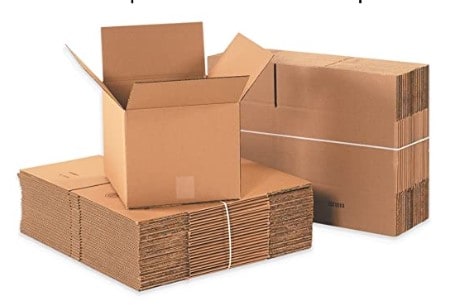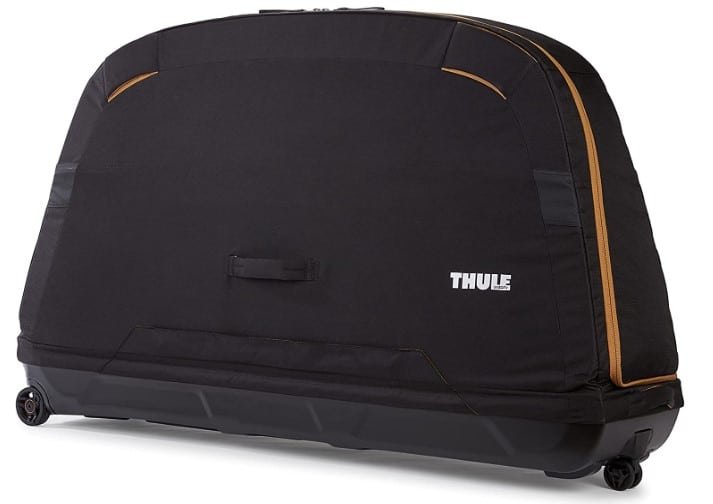A bike box is probably the cheapest and most convenient way to ship a bicycle. But given that bicycles differ in size, you’ve to consider the bicycle box dimensions carefully. So, how big is a bike box?
Most bike boxes measure 43 by 11 by 32 inches, usually considered the standard size for bike boxes. However, a few smaller ones measure 47.2 by 9.8 by 30.7, while bigger ones come in three major options; 71 by 11.25 by 31 inches, 53 by 9 by 29 inches, and 54 by 8 by 28 inches.
Understandably, bike boxes measuring 43 by 11 by 32 inches suit medium-size bikes like road bikes, mountain bikes, beach cruisers, and hybrid bikes.
On the other hand, those that measure 47.2 by 9.8 by 30.7 inches suit kids’ bikes while those measuring 71 by 11.25 by 31 inches/53 by 9 by 29 inches and 54 by 8 by 28 inches suit tandems and recumbent bikes, respectively.
So, the bike size and type are critical influencers of the bike shipping box dimensions. As I’ll explain later, you’ve to consider the two factors when picking a bicycle box.
I’ll also explain what is considered a standard bicycle box and what is not.
Let’s get started.

So, How Big Is A Bike Box? Standard Boxes and the Exceptions
Standard Bike Box Dimensions
Before I can go any further, it’s worth clarifying that there is no standard bicycle box. The so-called standard is usually a bicycle box with dimensions 43 by 11 by 32 inches.
Such boxes meet the FedEx as well as UPS shipping standards. What’s more, the dimensions comply with the 130-inch size limit for international shipping boxes.
That means you can ship such a box domestically or internationally.
Ordinarily, a 43 by 11 by 32 inches box is designed for mid-size adult bikes. That includes road bikes, beach cruisers, mountain bikes, and hybrid bikes.
The Exemptions – Smaller and Bigger Bike Box Dimensions
Given that a 43 by 11 by 32 inches bicycle box is designed for medium bikes, you’ll need a smaller bike size to fit a kid’s bike. In such a case, I recommend a bicycle box with dimensions 47.2 by 9.8 by 30.7 inches.
And if you want to ship a bigger bike like a tandem or recumbent bike, you’ll also need a box bigger than standard.
Consider a bicycle box measuring 53 by 9 by 29 inches or 54 by 8 by 28 inches for shipping a recumbent bike and 71 by 11.25 by 31 inches for tandem bikes.
Such bike boxes are bigger than standard, and so they are perfect for big-size bikes.
One perfect example is the Boxes Fast BFHD54828FOL Cardboard Bike Box. (View on Amazon) The 54 by 8 by 28 inches bicycle box is ideal for storing a bike and its packaging and shipping.
Its full overlap flaps provide your bike with added protection.
The best part is that the bicycle box is reusable, which means it can last you longer. It’s also recyclable, making it best for the environment.

Factors That Influence the Bike Box Size
So, why are some bike boxes bigger than others? Here are the critical size influencers:
1. Bike Type
Generally, the bike type determines what bike box size to get. Though you can ship a kid’s bike in a standard box, it may be too big for the bike.
Similarly, you cannot transport a tandem or recumbent bike in a standard bicycle box as the bike will be too big for the box.
Below is a table summary of different bike types and their recommended bicycle box dimensions to help you understand what bike box to get.
| Bike Type | Recommended Box Size |
| Kids’ Bike | 47.2 by 9.8 by 30.7 inches |
| Medium Bike ( Road Bike, MTB, Cruiser, and Hybrid Bike) | 43 by 11 by 32 inches |
| Recumbent Bike | 53 by 9 by 29 inches or 54 by 8 by 28 inches |
| Tandem Bike | 71 by 11.25 by 31 inches |
2. Bike Frame Size
Bike frames come in varying sizes. Generally, you expect a standard bicycle box to be big enough for a medium (M) and a large (L) bike frame. It’ll, however, be slightly bigger for a small (S) and extra small (XS) bike frame.
Concerning an extra-large (XL) and extra-extra-large (XXL) frame, go for something bigger, probably a 53 by 9 by 29 inches or 54 by 8 by 28 inches or 71 by 11.25 by 31 inches.
How About The Dimensions Of A Bike Box For Airline Shipping?
Your bicycle box can be described as luggage if the total distance doesn’t exceed 62 inches. In that case, the sum value of adding the length, height, and width shouldn’t be more than 62 inches.
If it is, then you’ll have to pay extra to ship it.
If we take the standard bike box dimensions, for example;
The total length will be 86 inches (43 + 11 +32). Clearly, that’s more than 62 inches, which means you’ll have to pay extra.
In most cases, airlines ship bikes that are not heavy than 50 pounds. So, if your bicycle box is not just bigger than the luggage size but also heavier, you’ll need to find an alternative shipping solution.
Note, however, that the bicycle box size restrictions vary between airlines.
Besides The Bicycle Shipping Box Dimensions, What Else Should You Consider?
In addition to the shipping box dimensions, consider these elements of the bicycle box:
a) Box Strength
You’ve to pick a more robust bike box to be sure that it can carry your bike safely. So, you’ve first to consider the bike box material.
One of the best materials to consider is high-density polypropylene, which is waterproof and shock-proof.
Additionally, the material makes the box robust and rigid.
Other boxes come with bike guards to protect delicate components like discs, derailleur, shock suspension, and cranks.
You can also consider corrugated materials, which are not just recyclable but also reusable.
b) Box Weight
Also, factor in the weight of the bicycle shipping box as it impacts the overall shipping weight.
Most bike boxes measure 5-6 kg, but there are a few others that weigh more.
Overall, the lighter the box weight, the more packing allowance you get to enjoy. You should note, however, that heavier bikes tend to be stronger than lighter ones.
How to Pack a Bike in a Shipping Box
It would help if you packed your bike in a bicycle shipping box in the safest way possible.
Here are the things you’ll need to achieve that:
- A sizeable bike box
- Packing foam
- Accessory bag
- Foam tubing
- Bubble wrap
- Plastic spacers
- Zip ties
Once you have the above supplies, follow these steps to pack your bike:
- Remove the pedals, wheels, handlebars, seat post, and derailleur.
- Also, remove attachments like fenders, mini-pump, and bottle cages.
- Cover the frame and fork with foam tubing and tie up the foam using the zip ties.
- Also, do the same for the shifters and brake levers, seat post, derailleur, and handlebars.
- Then cover the parts with spacers for the best protection.
- Put things like the bottle cages, pedals, derailleur, and other smaller attachments in the accessory bag.
- Now arrange everything that you’ve disassembled in the bike box, starting with the frame and wheels.
- Ensure you cover every part in bubble wrap or foam or both before packing.
- If there are still spaces in the packing box, fill them up with foam.
Remember to deflate the tires before packing and to position the handlebar parallel to the bike frame.
What Are The Alternatives To A Bike Box For Shipping?
Though regular bike boxes are lightweight, cheaper, and easier to use, they do not offer as much protection as hard-shell bicycle travel cases.
Hard-shell bicycle cases come in hard material and have ample softer padding to protect your bike while on transit fully. They are, however, costlier and slightly heavier.
One perfect example is the Thule Roundtrip Bike Case (View on Amazon), which is best for transporting a mountain bike on the go.

Relevant:
Closing Thought:
Now you have the answer to – how big is a bike box? So, before you can get a box for shipping your bicycle, you’ve to consider your bike size and type to know if it’ll fit.
I hope the above guide will help you make a better decision.